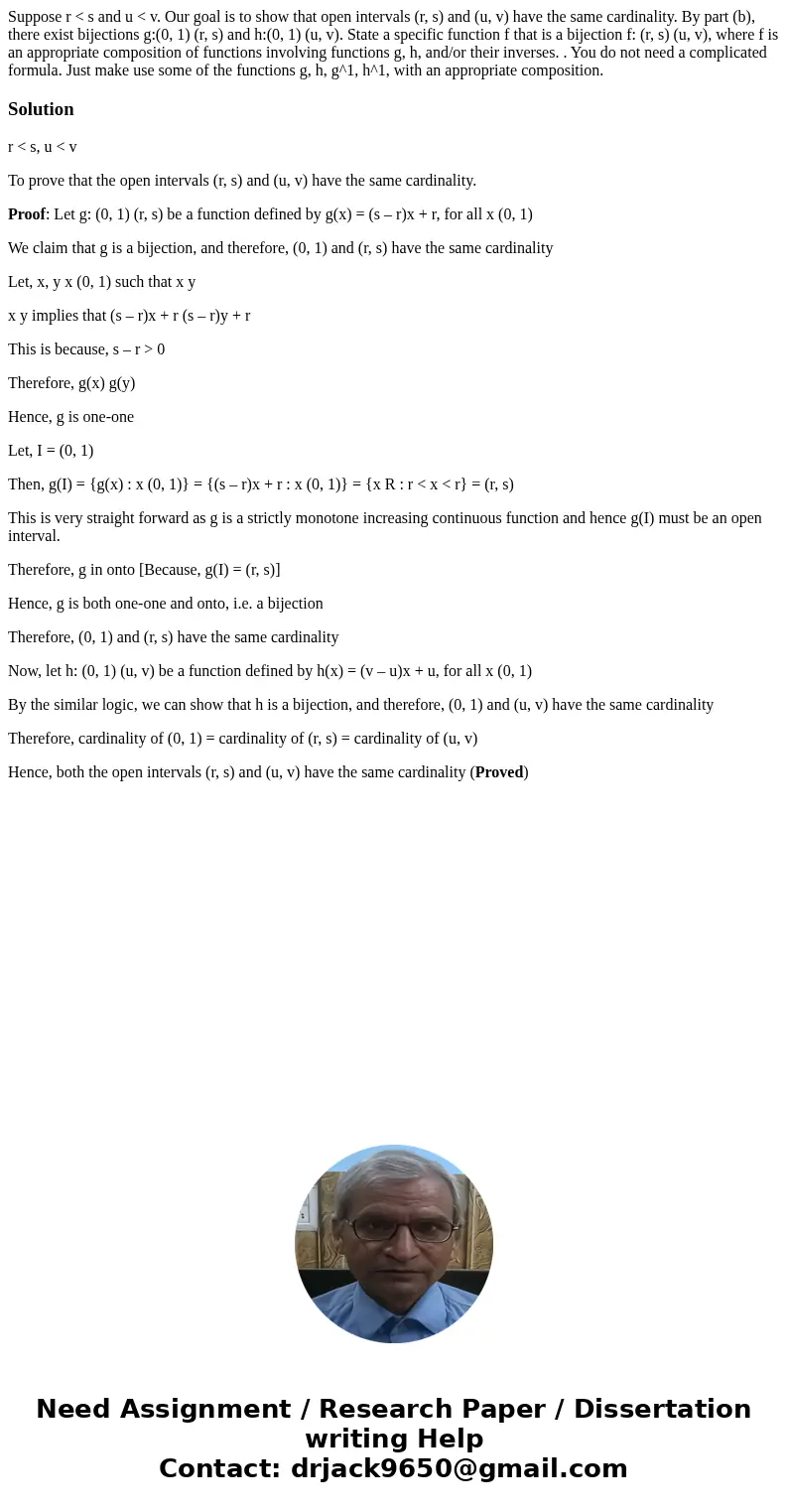Suppose r s and u v Our goal is to show that open interval
Suppose r < s and u < v. Our goal is to show that open intervals (r, s) and (u, v) have the same cardinality. By part (b), there exist bijections g:(0, 1) (r, s) and h:(0, 1) (u, v). State a specific function f that is a bijection f: (r, s) (u, v), where f is an appropriate composition of functions involving functions g, h, and/or their inverses. . You do not need a complicated formula. Just make use some of the functions g, h, g^1, h^1, with an appropriate composition.
Solution
r < s, u < v
To prove that the open intervals (r, s) and (u, v) have the same cardinality.
Proof: Let g: (0, 1) (r, s) be a function defined by g(x) = (s – r)x + r, for all x (0, 1)
We claim that g is a bijection, and therefore, (0, 1) and (r, s) have the same cardinality
Let, x, y x (0, 1) such that x y
x y implies that (s – r)x + r (s – r)y + r
This is because, s – r > 0
Therefore, g(x) g(y)
Hence, g is one-one
Let, I = (0, 1)
Then, g(I) = {g(x) : x (0, 1)} = {(s – r)x + r : x (0, 1)} = {x R : r < x < r} = (r, s)
This is very straight forward as g is a strictly monotone increasing continuous function and hence g(I) must be an open interval.
Therefore, g in onto [Because, g(I) = (r, s)]
Hence, g is both one-one and onto, i.e. a bijection
Therefore, (0, 1) and (r, s) have the same cardinality
Now, let h: (0, 1) (u, v) be a function defined by h(x) = (v – u)x + u, for all x (0, 1)
By the similar logic, we can show that h is a bijection, and therefore, (0, 1) and (u, v) have the same cardinality
Therefore, cardinality of (0, 1) = cardinality of (r, s) = cardinality of (u, v)
Hence, both the open intervals (r, s) and (u, v) have the same cardinality (Proved)

 Homework Sourse
Homework Sourse